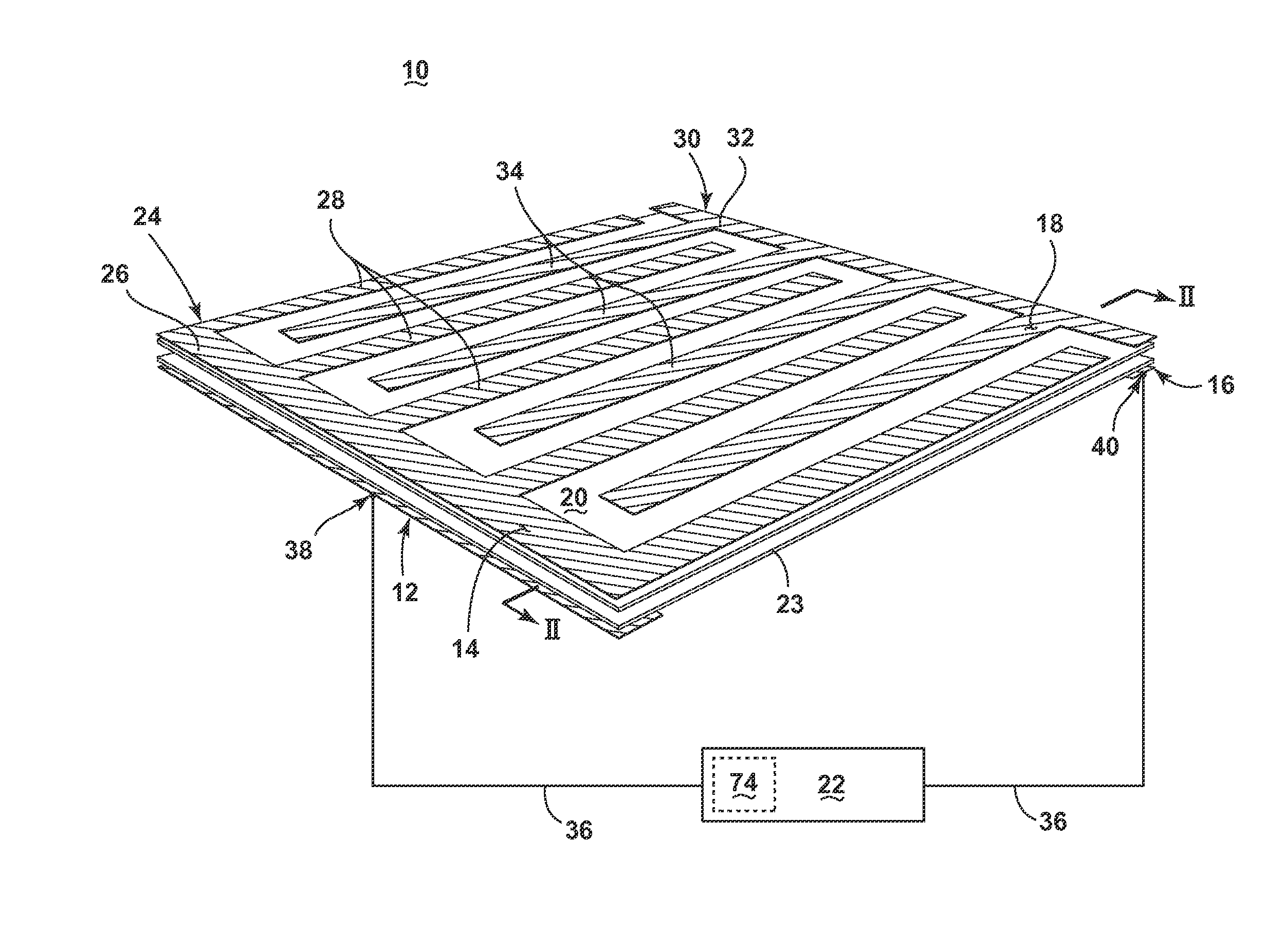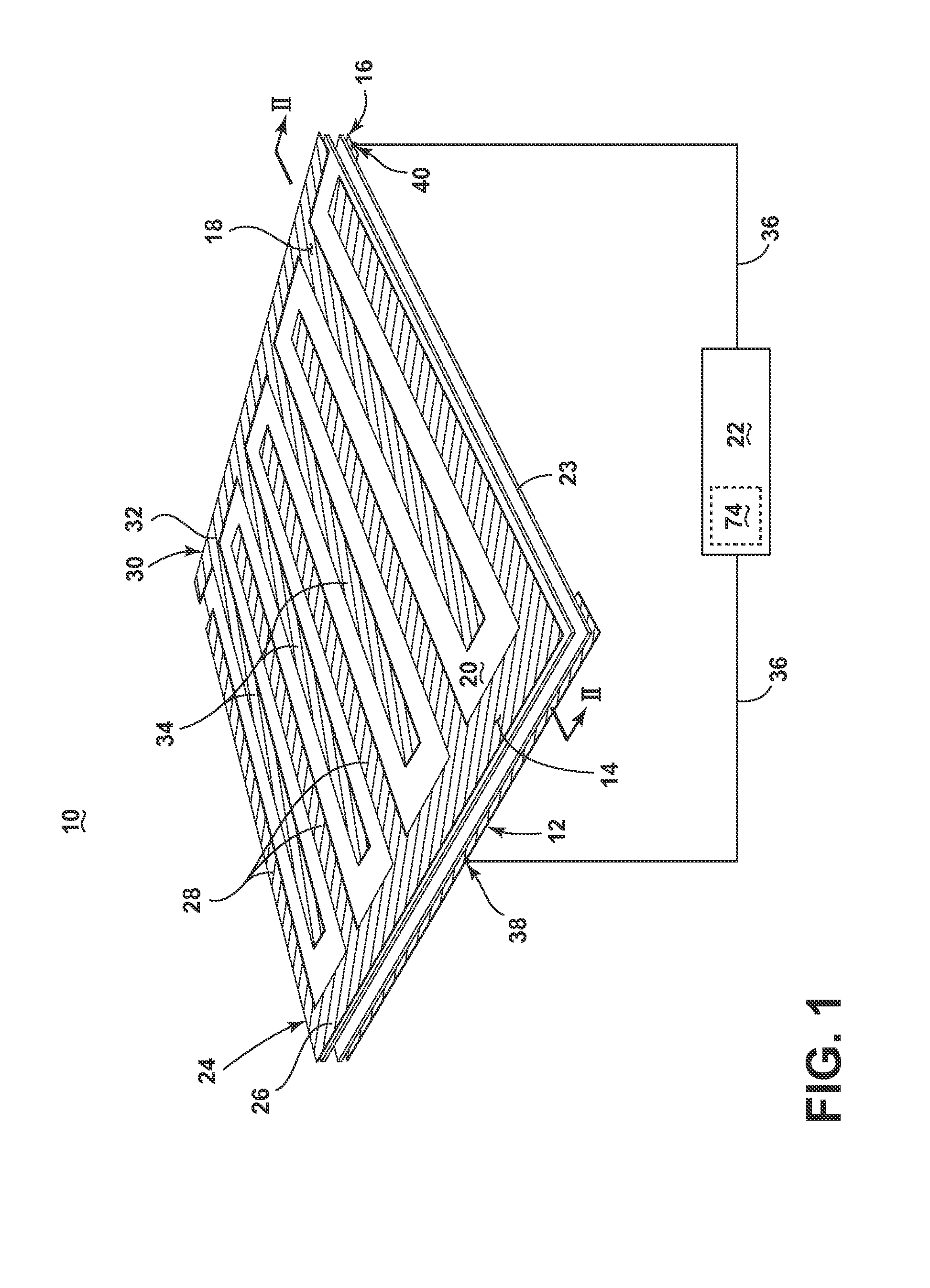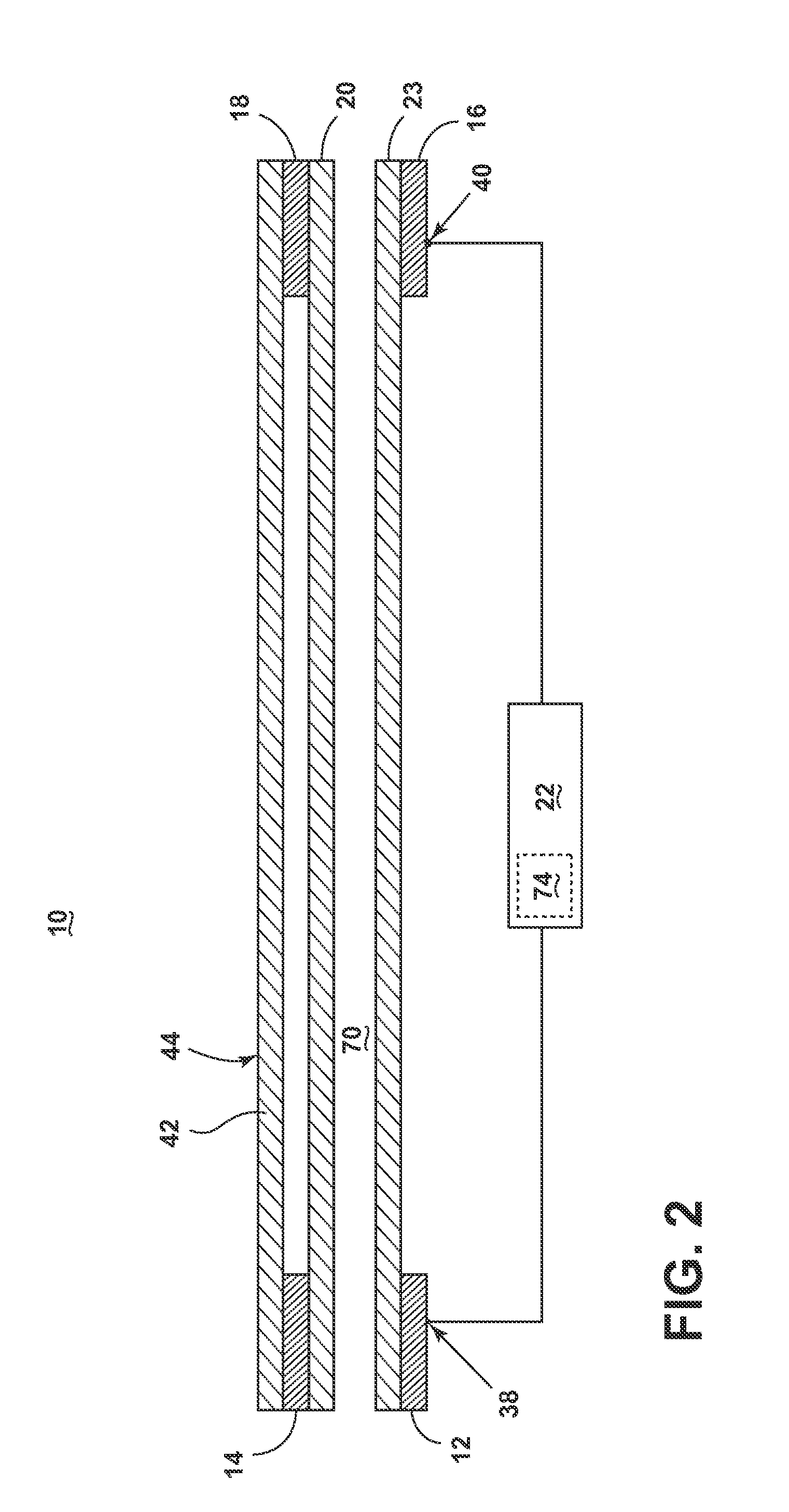Method and apparatus for drying articles
- Summary
- Abstract
- Description
- Claims
- Application Information
AI Technical Summary
Benefits of technology
Problems solved by technology
Method used
Image
Examples
first embodiment
[0017]FIG. 1 is a schematic illustration of a laundry treating applicator 10 according to the invention for dehydrating one or more articles, such as articles of clothing. As illustrated in FIG. 1, the laundry treating applicator 10 has a structure that includes conductive elements, such as a first cathode element 12 and a second cathode element 14, and an opposing first anode element 16, a second anode element 18, in addition to a first non-conductive laundry support element 20, an optional second non-conductive support element 23, and an RF generator 22 having a controller 74. Although not shown, the laundry treating applicator 10 may also include a user interface wherein a user may input manually selected values for laundry characteristics, such as a size, quantity, material composition, acceptable heat level, and acceptable power level.
[0018]The second cathode element 14 further includes a first comb element 24 having a first base 26 from which extend a first plurality of teeth ...
second embodiment
[0046]As shown in FIG. 6, the assembled laundry treating applicator 110, according to the invention, creates a substantially radial integration between the sleeve 142, second cathode and anode elements 114, 118 (cathode element not shown), and drum 119 elements. It may be envisioned that additional layers may be interleaved between the illustrated elements. Additionally, while the cathode ring 112 and anode ring 116 are shown offset about the rotational axis for illustrative purposes, alternate placement of each ring 112, 116 may be envisioned.
[0047]The second embodiment of the laundry treating applicator 110 operates by creating a first capacitive coupling between the cathode ring 112 and the second cathode element 114 separated by at least a portion of the drum 119, a second capacitive coupling between the anode ring 116 and the second anode element 118 separated by at least a portion of the drum 119, and a third capacitive coupling between the pluralities of teeth 128, 134 of the...
fourth embodiment
[0056]the laundry treating applicator 310 operates by creating a first capacitive coupling between the cathode ring 312 and the second cathode element 114 separated by at least a portion of the drum 319 or air gap, a second capacitive coupling between the anode ring 316 and the second anode element 118 separated by at least a portion of the drum 319 or air gap. During rotation, the RF generator 22 may be off, or may be continuously or intermittently energized to generate an e-field between the first, second, and third capacitive couplings which interacts with liquid in the laundry. The liquid interacting with the e-field located within the inner surface 144 will be dielectrically heated to effect a drying of the laundry.
[0057]FIG. 9 illustrates an embodiment where the applicator is included in a laundry treating appliance, such as a clothes dryer 410, incorporating the drum 119, 219, 319 (illustrated as drum 119), which defines a treating chamber 412 for receiving laundry for treatm...
PUM
 Login to View More
Login to View More Abstract
Description
Claims
Application Information
 Login to View More
Login to View More - R&D
- Intellectual Property
- Life Sciences
- Materials
- Tech Scout
- Unparalleled Data Quality
- Higher Quality Content
- 60% Fewer Hallucinations
Browse by: Latest US Patents, China's latest patents, Technical Efficacy Thesaurus, Application Domain, Technology Topic, Popular Technical Reports.
© 2025 PatSnap. All rights reserved.Legal|Privacy policy|Modern Slavery Act Transparency Statement|Sitemap|About US| Contact US: help@patsnap.com



